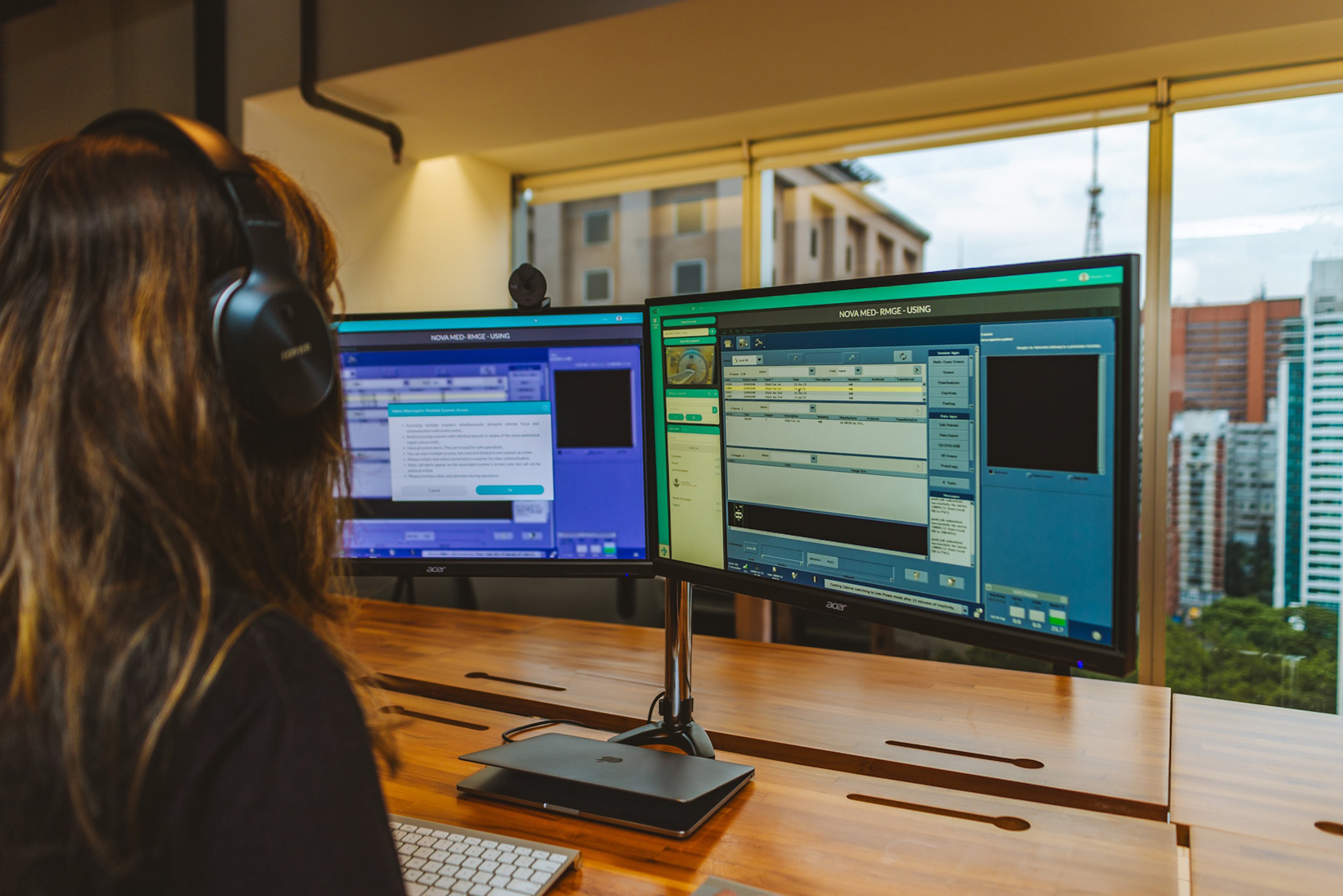GE HealthCare Delivers Confidence with Focus on Usability, Precision, and Efficiency at RSNA

GE HealthCare again has a sizeable exhibit hall presence at McCormick Place—booth #7330—bringing more than 40 medical imaging innovations to the floor. These solutions have been developed and refined with attention to feedback of customers, explains Rekha Ranganathan, Senior VP and GM of Imaging Digital Solutions, and the current challenges they are facing.
“More and more, we hear our customers saying they want more personal, precise approaches to diagnosing patients. At the end of the day, whatever we do, it is about patient outcomes and the image quality that [delivers] confidence,” says Ranganathan, explaining that staff shortages continue to drive new innovations to gain workflow efficiencies.
“Our AI-enabled equipment…is better from a workflow and usage point of view so that the burden is not so much on the technologists and radiologists,” she adds.
By designing easy-to-use, application-rich equipment with the entire clinical pathway in mind, GE HealthCare’s solutions aid in diagnosis while considering next steps of treatment and recovery, “making the time shorter and making it easier across the board,” to care for patients, Ranganathan says.
Care-focused digital solutions
At RSNA, GE HealthCare is unveiling its new Pristina Via™ mammography system, providing technologists with a suite of sophisticated tools that balance the demands of diagnostic accuracy and fast-paced workflows to facilitate patient-centered breast care. Highlights include zero-click acquisition, no wait times between exposures, vendor-neutral prior image comparison, and the lowest radiation dose used for all breast thicknesses among major mammography systems.
 GE HealthCare is also showcasing TrueFidelity, the company’s suite of AI solutions in the CT space, with expanding applications in deep learning image reconstruction and reduced imaging noise for sharp results.
GE HealthCare is also showcasing TrueFidelity, the company’s suite of AI solutions in the CT space, with expanding applications in deep learning image reconstruction and reduced imaging noise for sharp results.
CareIntellect for Oncology—a cloud-first application that brings patient data from disparate systems into a single view using generative AI to summarize clinical notes and reports—should be available in the US in 2025.
“[CareIntellect] brings together multiple different data sources to highlight the ability for an oncologist to really draw the right insights to take care of cancer patients,” Ranganathan says, adding that clinicians can quickly assess disease progression and potential deviations from treatment to determine appropriate next steps of care.
Partnerships in play
GE HealthCare is also highlighting some key collaborations. The company is partnering with Ionic Health to provide remote scanning in a multi-vendor, multi-fleet, multimodality solution across the portfolio, which will help address widespread technologist shortages, Ranganathan says. IONIC Health’s nCommand Lite technology provides remote patient scanning support, remote access for viewing of images, and connection to remote experts sotechnologists can seek real-time guidance during exams.
GE HealthCare and RadNet—and its subsidiary, DeepHealth—have also partnered to develop SmartTechnology™ solutions that marry expertise in medical imaging, informatics, and care delivery. The recently announced partnership is poised to “harness the transformative power of AI to address key challenges across the imaging value chain, including helping increase the efficiency of imaging interpretation and reporting, enabling collaboration across care teams, improving the clinical interpretation of images, and enhancing operational efficiency and productivity,” particularly in breast cancer screening.
The company has also recently partnered with Blackford to offer its platform across True PACS and Centricity PACS.
“This [partnership] allows us to orchestrate several third-party applications that are targeted at improving workflow and reading capabilities for radiologists,” explains Ranganathan, noting applications ranging from lung to mammography scanning in helping radiologists adapt to increasing workloads and exam complexity.
Developments on display
In addition to the Senographe Pristina™ in mammography, GE will highlight the SIGNA™ MAGNUS, a 3T, head-only MRI scanner that was 510(k) FDA-cleared in November. The “very advanced MR solution, ” says Ranganathan, enables new capabilities for clinical imaging and neuroscience for potential detection of neurological, oncological, and psychiatric conditions.
The family of CT solutions is also on display: the Revolution™ Ascend platform, Interventional CT, and Revolution™ Apex platform with a focus on both productivity and affordability. Likewise, their array of versatile ultrasound products—as well as Advanced Visualization Solutions for guidance—are represented at the booth. AMX™ Navigate, Definium™ Pace Select ST, and Upgrade and Lift Solutions are available on the X-ray side.
GE HealthCare will also be showcasing molecular imaging solutions including its PET/CT Omni™ and StarGuide™ and radiopharmaceuticals. Its FDA-approved flurpiridaz F 18 PET MPI agent, Flyrcado™, demonstrates high diagnostic efficacy in patients with known or suspected coronary artery disease (CAD).
Industry demands
Ranganathan notes that GE HealthCare anticipates RSNA to experience the human side of care and learn how their solutions can better serve customers and patients—at the same time, integrating digital solutions like AI to address human shortages. Since the pandemic, she says, customers wonder how to do more with less.
“How do we be more efficient as a collective group along with hospitals and providers in this broad [healthcare] ecosystem while we optimize patient outcomes, and also make sure the diagnostic accuracy continues to improve?” she asks, identifying a “three-part problem”—for GE HealthCare, and other stakeholders worldwide—to keep working through.
